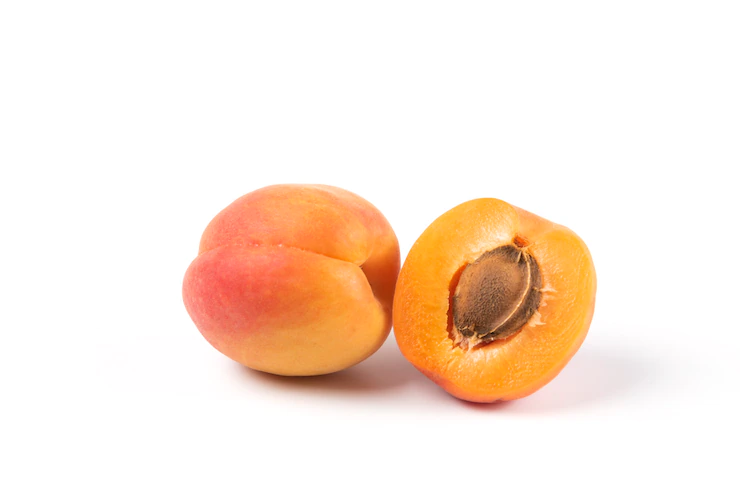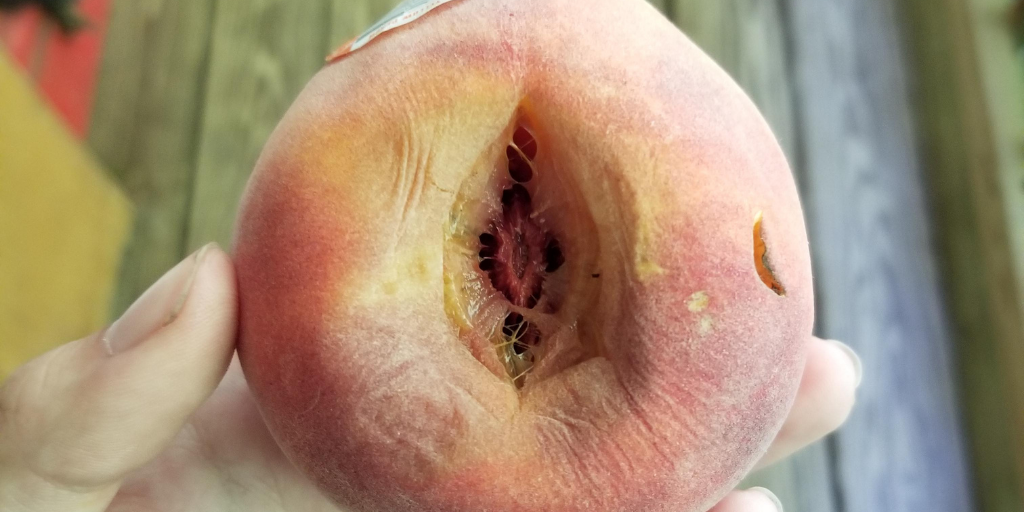Try this simple test if you’re wondering how to tell if a peach has gone wrong. Squeeze the peach gently, not hard. If the fruit gives slightly, it’s almost ripe. The peach should be firm but not mushy. You can leave it on the counter for a few days to ripen more. Alternatively, you can leave it on the kitchen counter for a week or two.
If the peach feels soft, you should throw it away. This is a sure sign that the fruit is not ripe. It should be solid all over, with no visible bruises or dark spots. It should smell like a peach. If it doesn’t, it’s either too green or too early. There are a few ways to tell if a peach is overripe. A ripe peach is yellow with a reddish tint on the side facing the sun. A ripe peach will not have any bruises or dark spots on its surface.
How To Tell If A Peach Is Bad?
There are numerous reasons Americans look forward to summers in the South. Whether you take a family trip to the beach, sweat it out in the fans at a baseball game, or enjoy the long, humid evenings sipping a refreshing cocktail while rocking on your porch, summer delivers a myriad of joys.
However, none of which can compare with biting into a delicate, juicy, and oh-so-sweet ripe peach. Like much fresh foods (have you ever waited on an avocado to ripen?), you have to dive into your peach at just the perfect moment.
You bring home a basket of peaches from the farmers’ market with vast hopes of immediately creating a fresh peach pie, storing them for the winter months, or just having the fruit accessible for nibbling.
How shocked you are when you discover the peaches are either too soft and mealy or still hard as a rock. How do you know when a peach is ripe and ready to eat? Using your senses of sight, touch, and smell, search for these telltale indicators, and you will never again be disappointed when you bite into a peach.
Look For The Right Color
A ripe peach has a dark yellow tint, or ground color, on the fruit area that hasn’t been exposed to the sun. You want to notice a crimson hue on the opposite side where the fruit did get light exposure. Avoid peaches with noticeable dark stains and bruising, which are likely overripe.
If the peach is green or has any sign of green left on it, it requires more time on the tree and is harvested too early. There is something more to look for when choosing peaches. Wrinkles are an excellent feature when looking for a ripe peach.
You can determine when a peach is ready to eat by looking for evidence of withered skin around the stem. Water begins to drain once the fruit is harvested since the skin is so porous. The evaporation generates minor creases around the stem while concentrating the flavors of the fruit, which ensures an incredibly delicious peach for you.
Feel For Firmness
You can tell if a peach is ripe or not by a gentle yet firm squeeze with your fingertips. You want your peach to have a little give when you gently squeeze it, but not so much that you bruise or poke a hole into the flesh merely by tapping it with your finger.
If the peach is rock hard, it was harvested too early, like a baseball. If it is complicated with a small amount of giving, like a tennis ball, it needs a little more time to get to that perfectly ripe position. Leave the peach on the kitchen counter for another day (check it frequently) until it is soft.
Smell
A clear sign that a peach is ready to be consumed is when it gives out a pleasant perfume, so go ahead and take a whiff. No scent usually equals no taste, and a peach that is not yet ripe will not have a strong smell.
As peaches ripen, their aroma becomes stronger and stronger, and a perfectly ripe peach will have an aroma that will be impossible to resist.
How To Freeze Peaches For Long-Term Storage?
Knowing how to determine if peaches are rotten is only the first step toward enjoying them, and it’s also crucial to understand how to keep them properly for the best flavor. The freezer is an excellent location to store peaches for lengthy periods, as they can survive up to three months.
Place ice cubes and cold water in a basin or container off the side. Make an x-shape on the bottom of each peach with a knife, then place them in a pot of boiling water. Allow 30 seconds for the peaches to boil before transferring them to the ice water bath to stop the cooking process. Remove the peaches’ peels, remove the pits, and slice them into half-inch pieces.
Sprinkle them with lemon juice and arrange them on a parchment-lined baking sheet in a single layer. Place the fruits in the freezer for four hours to flash-freeze them. Place the frozen slices in freezer bags, label them with the date and contents, and return them to the freezer.
Whether you buy peaches from the supermarket or plant your peach tree, knowing which fruits are excellent and harmful is essential to savoring a lovely and juicy peach. Knowing how to preserve them and encourage rapid ripening allows you to pick and choose when to eat them.
Is It Okay To Eat A Peach That Has Become Overripe?
Those mushy peaches, on the other hand, do not have to go to waste, and you still have time to save all of that lovely, healthful bliss. Even though peaches are low in saturated fat and cholesterol, they are high in vitamins and minerals.
The most versatile fruit is a peach which has a little give to it, meaning that it can withstand little pressure without bruising. It’s on the verge of reaching its peak flavor and can ripen a little further before being used in baking. Soft: Ready to be consumed in its raw state. Soft fruits can also be utilized in the kitchen for baking and cooking.
Is It Possible To Become Sick From Eating Rotten Peaches?
Spoiled fruits may be contaminated with germs, molds, and other diseases that cannot be seen by the human eye. The flavor and nutritional value of a peach that has gone bad on the interior, for example, will be significantly reduced compared to fresh fruit. In addition, it may contain mold and harmful germs that can cause foodborne sickness if consumed.
Overripe fruits, which contain high amounts of fruit sugar fructose, might induce digestive trouble in sensitive persons. Overripe foods may induce digestive irritation in sensitive sugars since the amount of sugar increases fruit ripens.
Those who have frozen fruits that may have been affected should dispose of them immediately. A salmonella infection can cause fever, stomach cramps, and diarrhea in a person who has not yet recovered. These will typically manifest themselves within one week of consuming tainted food, and they may last for four to seven days after that.
How To Keep Peaches Fresh For A Long Time?
You only have a short amount of time to savor your fresh peaches before they go bad. You could be pushing your luck if you go to the farmer’s market on Sunday and want to cook a peach cobbler the following Thursday. That means you’ll have to devise a strategy to make your peaches last longer.
The shelf life of peaches can be extended by storing them in the refrigerator once they have reached their peak ripeness. To begin, you can lay your peaches in a bowl covered with plastic wrap, which will help them ripen more quickly.
For those who want to speed up the ripening process, Glad Press’s Seal can help you do just that! When peaches are ripe, the best way to keep them fresh is in a bag with large holes or, if they aren’t being kept in the refrigerator, in an open bag away from other fruits, such as bananas.
After you’ve chopped up your peaches, the best thing to do is wrap them snugly in plastic and store them in the refrigerator. When you know how to store peaches properly, you may expect them to last for 3–5 days. However, if you want to retain peaches for an even more extended period, you’ll want to learn how to freeze peaches first.
Conclusion
The color of a peach is another indicator of whether it’s ripe. A peach is a crimson-red or pinkish-red color, indicating it’s ripe. If the color is light yellow or orange, it’s too early. If it’s yellow or red, it means it’s too late. It’s impossible to tell if a fruit is ripe, so it’s best to buy a fresh one.
A peach’s color should be yellow or deep red. When a peach is ripe, it should be solid all over and feel heavy in your hand. It should also smell like an absolute, ripe, juicy peach. A green one isn’t ripe. It needs more time on the tree. Unless it smells like a “peach,” it’s too early.
A peach’s skin should be dark yellow or deep gold. The stem should be smooth and shriveled. If the flesh is soft and wrinkled, it’s too early. It should also smell like a peach. A peach should be firm but soft and have a soft texture. A soft peach should smell like a peach.
A fruit with wrinkled skin is not ripe. To determine if a peach is terrible, try to squeeze it gently. It should give slightly when you squeeze it. If it doesn’t, it’s too early and needs more time to ripen. If the peach doesn’t have any give, it’s overripe or too late. You’ll need to wait for a few more days to find out.


